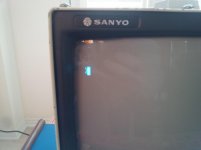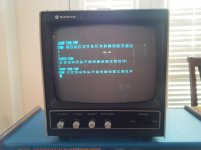deramp5113
Veteran Member
I tried to reseat the memory but other than that, I don't have memory to try to replace. I went from 9 lines of 9090 to 16 lines, to 1 line to 9 lines and am back there.
With working power (new power switch, C14 entry module and a few new wires and heat sink hardware), I'm now at about the same point you are (looking at power-on video displays). The 9090... is a good sign. Here's how to proceed:
1) Pull the personality module and any external RAM. For now, we don't want any system RAM.
2) All video RAM should be installed (U14-U21)
3) After power up, use a jumper wire to momentarily short pin 1 of U2 to ground. This forces the starting line counter on the screen to line zero so you'll get a full 16 lines of display data. The random power up state of this register is why you saw differing number of video lines displayed.
4) Use a jumper wire to momentarily short pin 2 of U75 to ground. This ensures the video display circuits are all enabled.
At this point, if your screen is all 9090909... then your video section (and video RAM) is all good. This pattern results from the CPU fetching 0xff's from the non-existent personality RAM area. This is a RST 7 instruction which pushes the return address onto the stack and jumps to address 0x38. There the CPU finds another RST 7 instruction, pushes the return address (0x00, 0x39) onto the stack and jumps back to 0x38 again. As you can see, this quickly ends up writing 0x00, 0x39 through memory (including the video RAM) since the 8080 SP is decrementing with every RST 7 instruction. In the character generator ROM, 0x00 is the squarish "0" you see and 0x39 is, of course, an ASCII "9".
Mike




